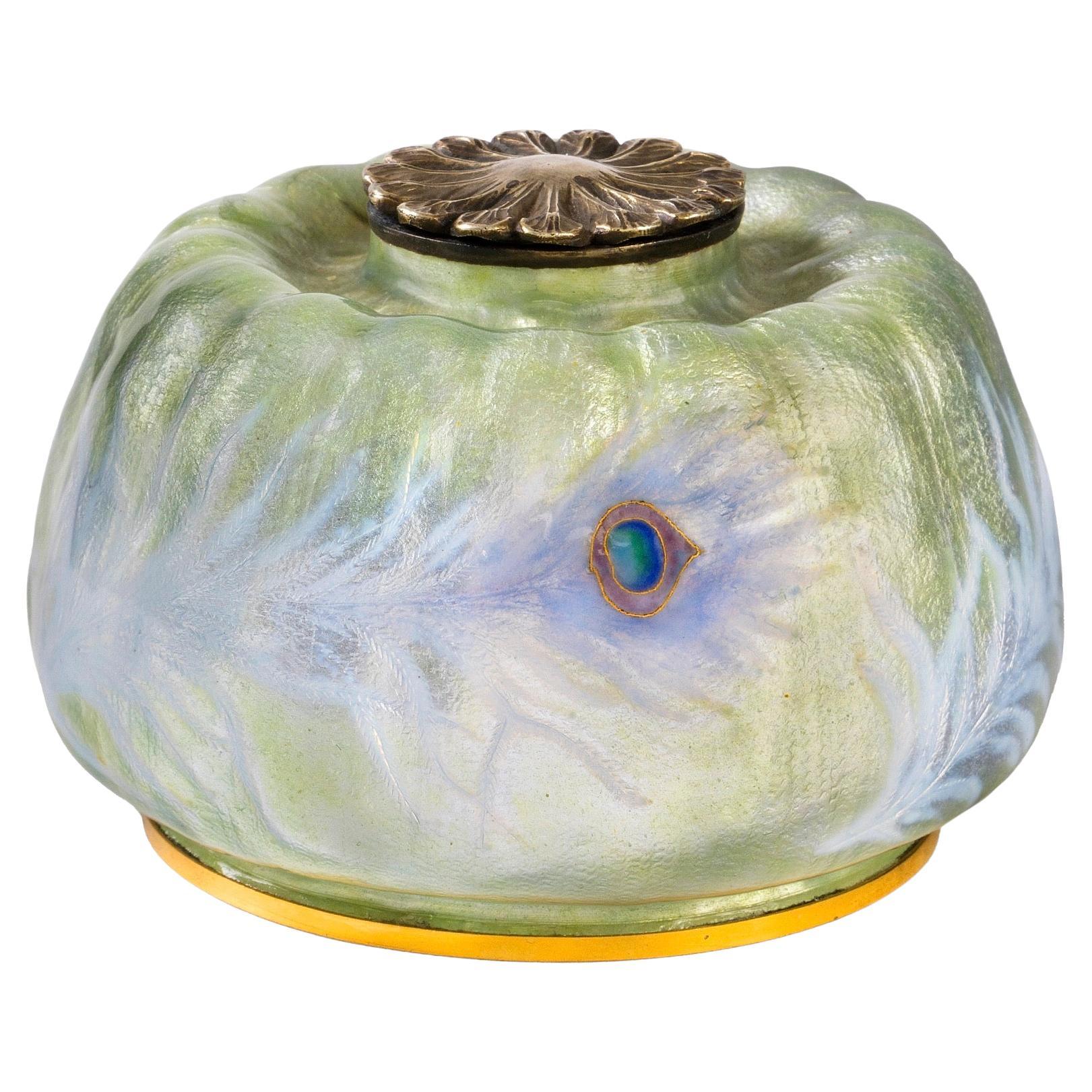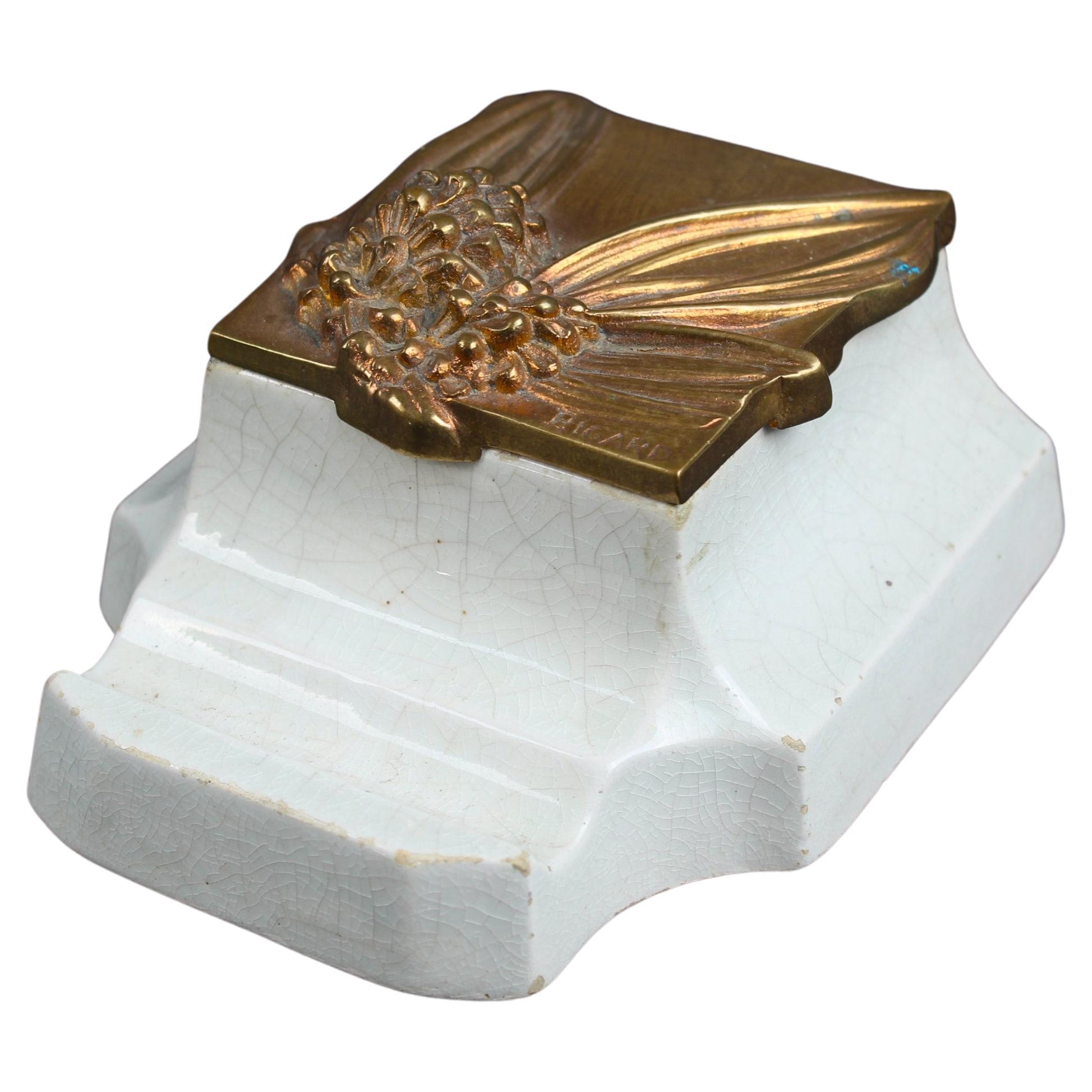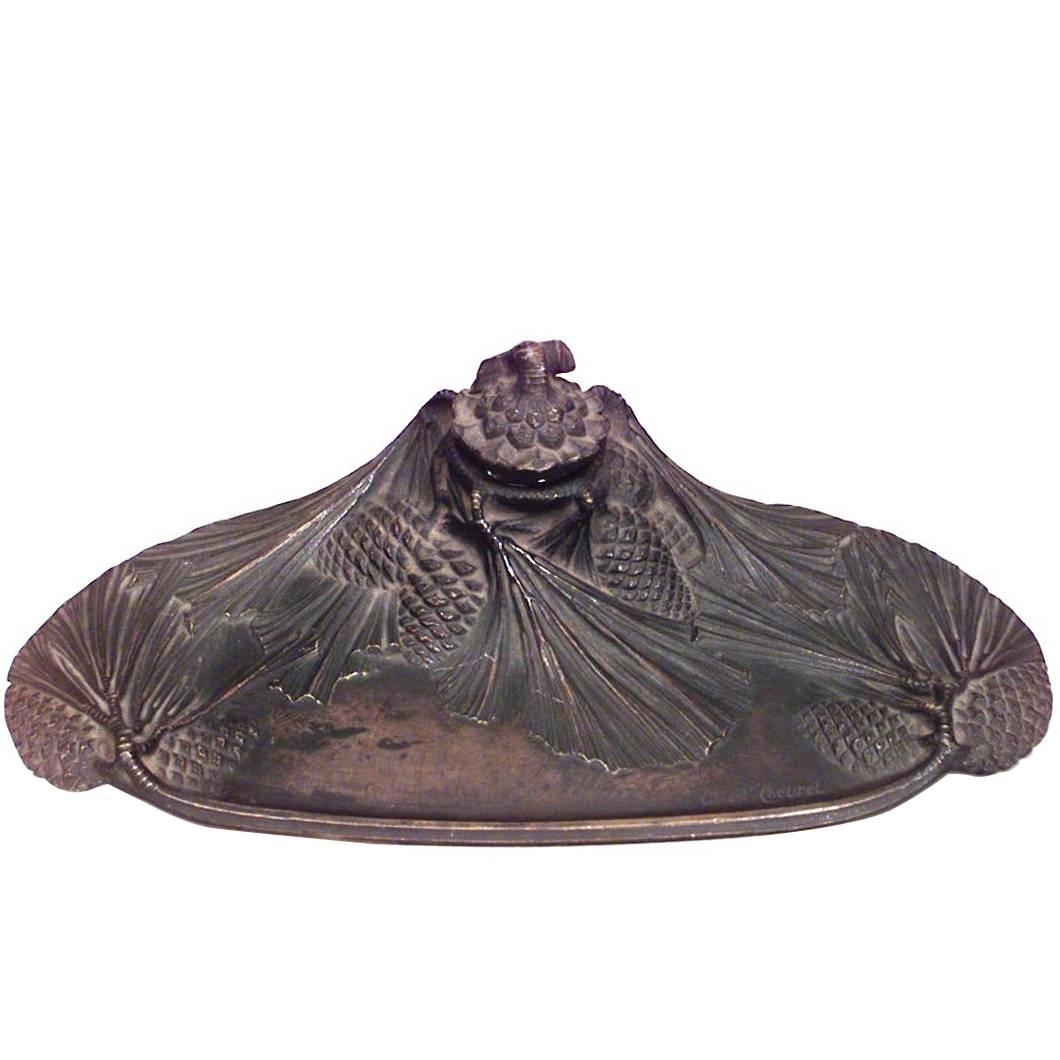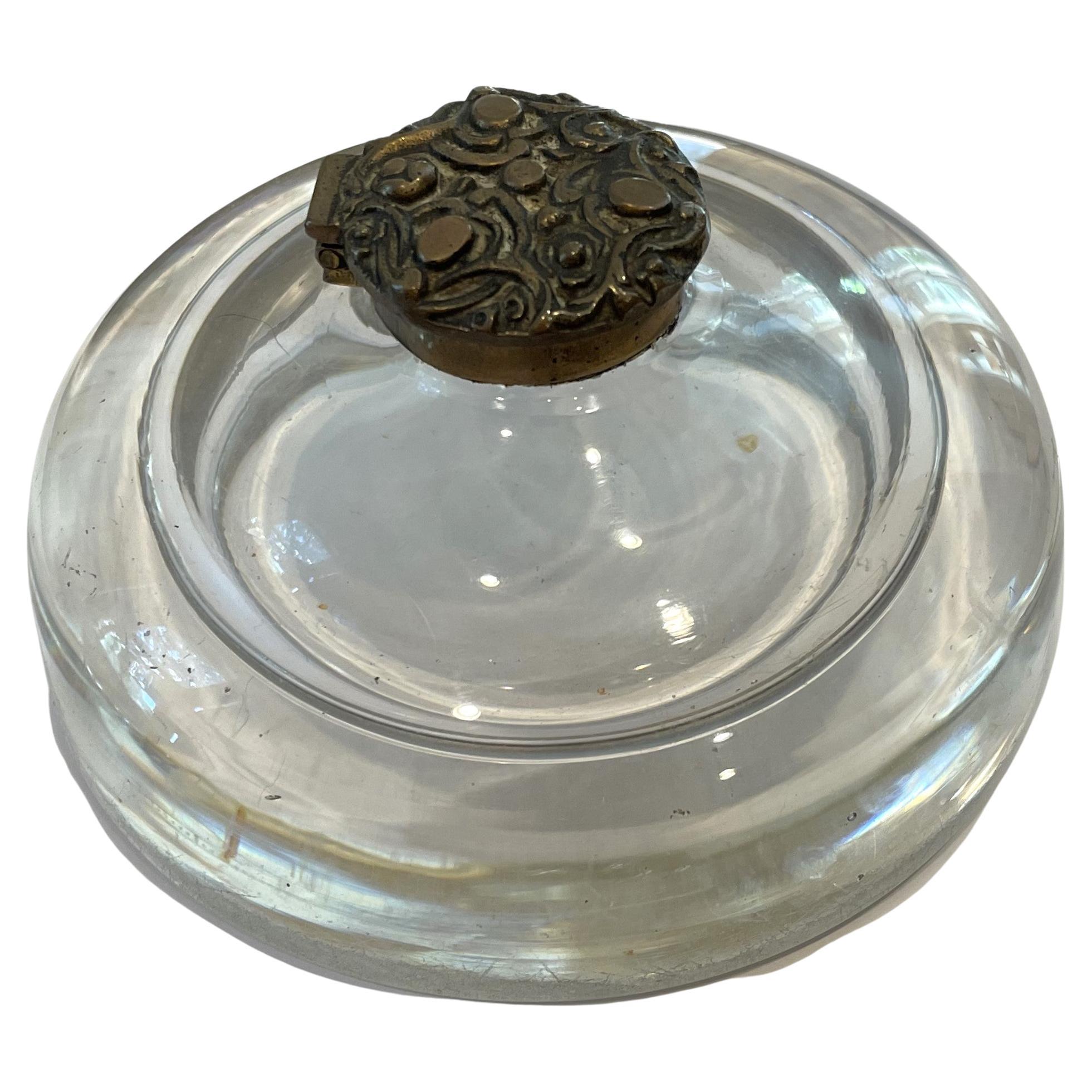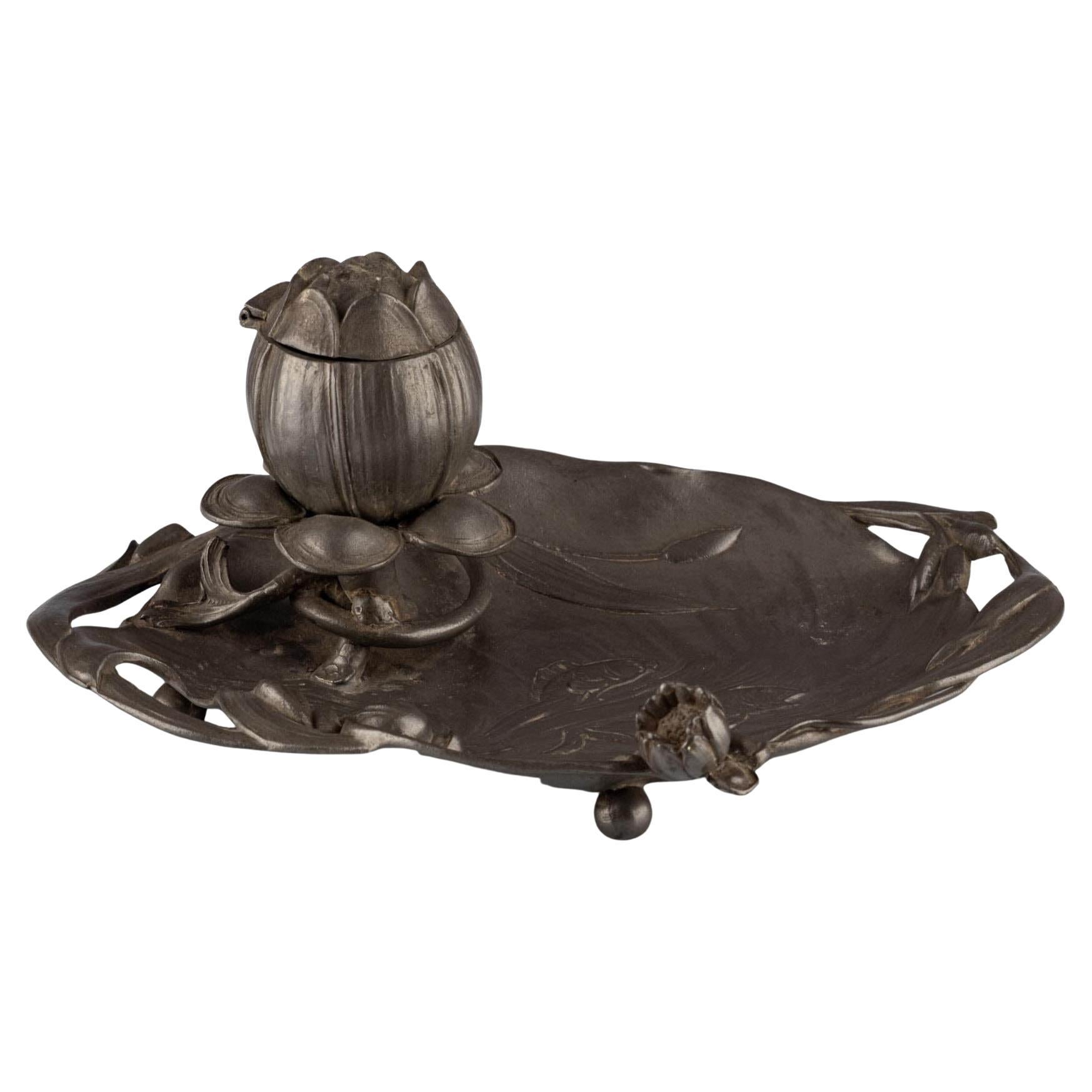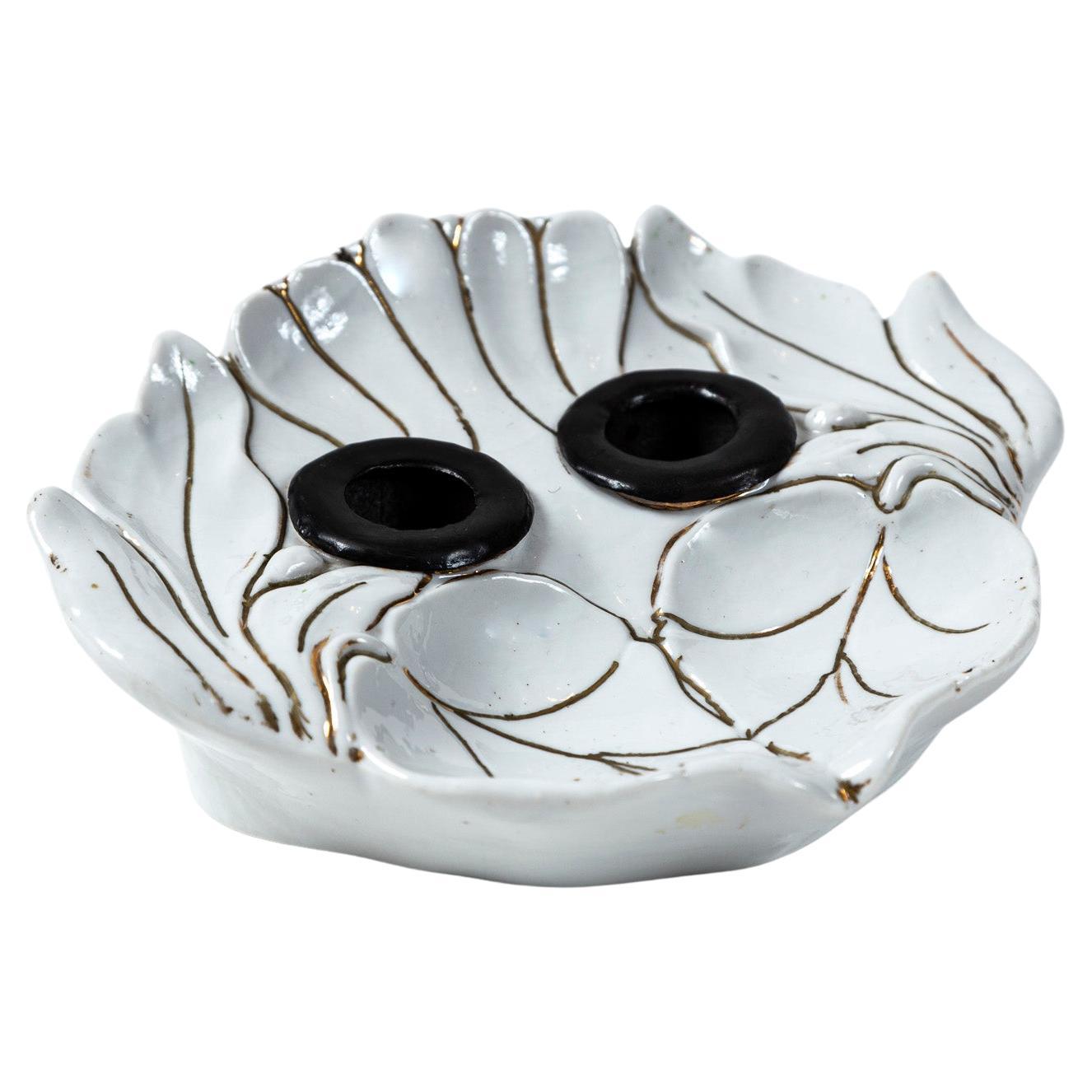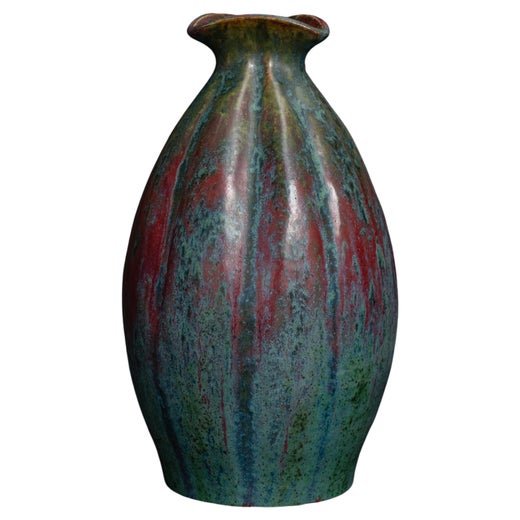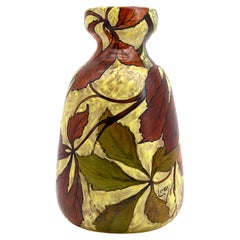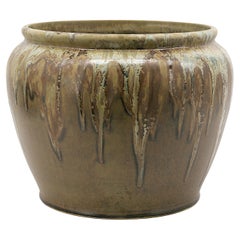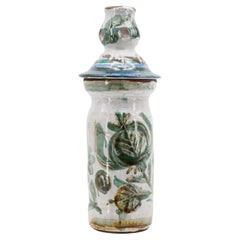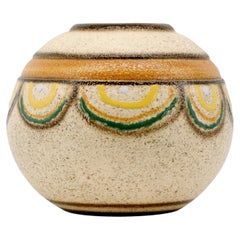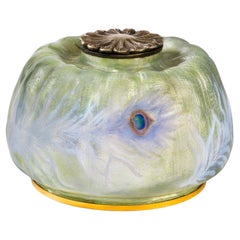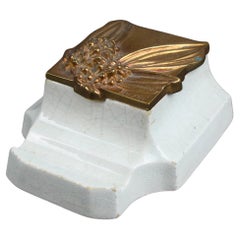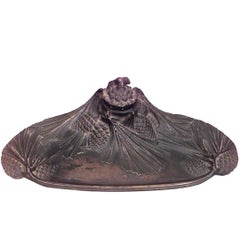Pierre-Adrien DALPAYRAT French Art Nouveau Stoneware Inkwell, 1890
About the Item
- Creator:Pierre-Adrien Dalpayrat (Artist)
- Dimensions:Height: 3.55 in (9 cm)Diameter: 5.12 in (13 cm)
- Style:Art Nouveau (Of the Period)
- Materials and Techniques:Pewter,Stoneware
- Place of Origin:
- Period:
- Date of Manufacture:ca.1890
- Condition:
- Seller Location:Saint-Amans-des-Cots, FR
- Reference Number:1stDibs: LU2312346409662
Pierre-Adrien Dalpayrat
After working nearly half his life as an itinerant faience painter and directing a production for commercial porcelain manufacturers, Pierre-Adrien Dalpayrat’s eyes were finally opened to reveal his true calling.
Ernest Chaplet had just won the gold medal at l’Exposition Universelle for his revolutionary sang-de-boeuf glazed stoneware. That same year, sparked by Chaplet’s revelatory creations, Dalpayrat moved to the hub of ceramic activity just southwest of Paris in Bourg-la-Reine to began extensive research into glazes and to begin producing stoneware.
Featuring what has since come to be known as Dalpayrat Red, he exploded on the Parisian art scene in 1892 with the first of many shows at the prominent Galerie Georges Petit. One of the most critically acclaimed ceramists of his time, Dalpayrat was made Chevalier de la Legion d’Honneur in 1900.
Find Pierre-Adrien Dalpayrat vases and other decorative objects for sale on 1stDibs.
(Biography provided by Galerie Fledermaus)
- ShippingRetrieving quote...Shipping from: Saint-Amans-des-Cots, France
- Return Policy
More From This Seller
View AllAntique Early 1900s French Art Nouveau Glass
Art Glass
Vintage 1910s French Art Deco Planters, Cachepots and Jardinières
Stoneware
Vintage 1960s French Mid-Century Modern Urns
Stoneware
Vintage 1920s French Art Deco Vases
Ceramic, Stoneware
Antique Early 1900s French Art Nouveau Glass
Art Glass
Antique 1890s French Art Nouveau Planters, Cachepots and Jardinières
Metal
You May Also Like
Early 20th Century French Art Nouveau Inkwells
Metal, Enamel
Early 20th Century French Art Nouveau Inkwells
Brass
Antique Late 19th Century French Art Nouveau Inkwells
Bronze
Early 20th Century European Art Nouveau Inkwells
Brass
Early 20th Century French Art Nouveau Inkwells
Pewter
Early 20th Century French Art Nouveau Porcelain
Porcelain
